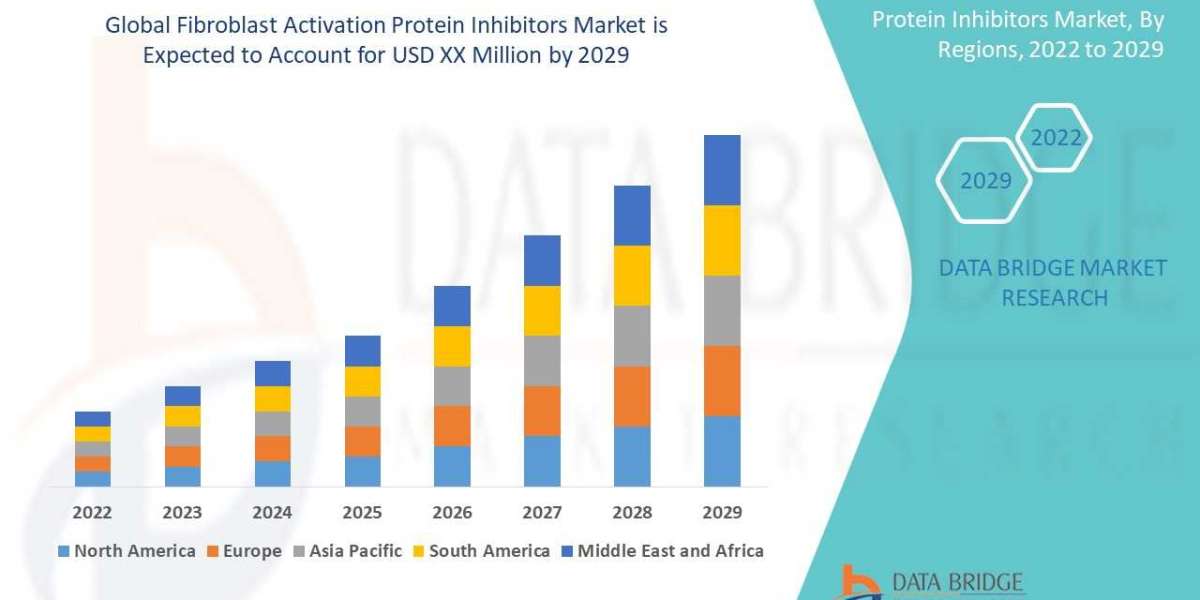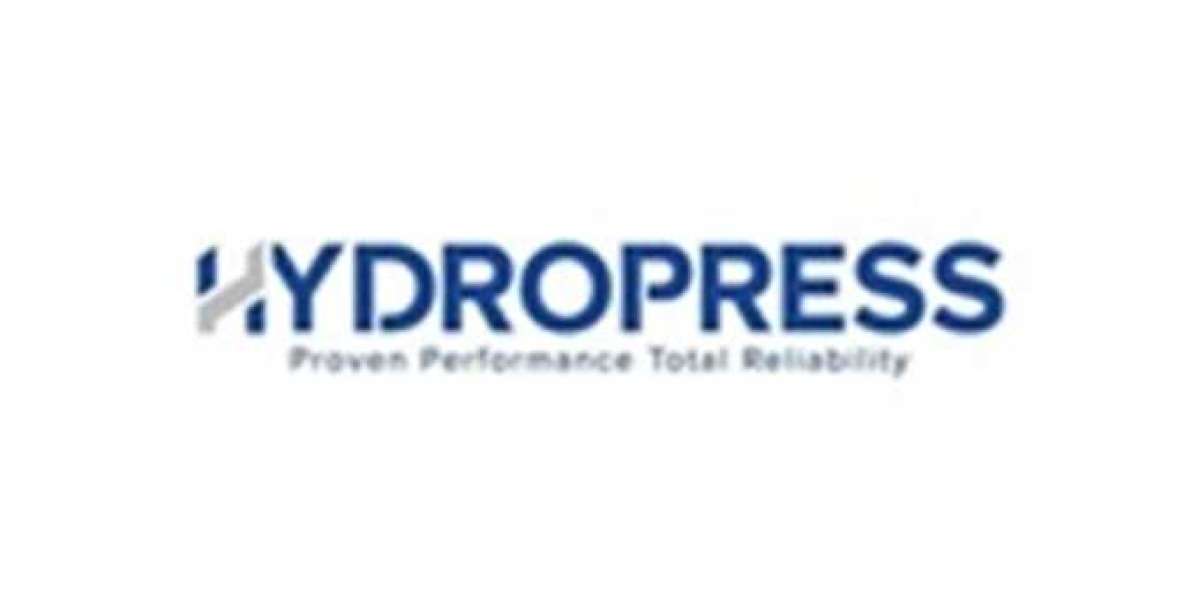"Fibroblast Activation Protein Inhibitors Market Size And Forecast by 2031
Data Bridge Market Research analyses a growth rate in the global fibroblast activation protein inhibitors market in the forecast period 2022-2029.
Fibroblast Activation Protein Inhibitors Market research report provides a comprehensive analysis of the market. The report aims to provide insights into Fibroblast Activation Protein Inhibitors Market trends, growth opportunities, key drivers and challenges, competitive landscape, and other crucial factors that may impact the market in the forecast period (2024-2031).
Get a Sample PDF of Report - https://www.databridgemarketresearch.com/request-a-sample/?dbmr=global-fibroblast-activation-protein-inhibitors-market
Which are the top companies operating in the Fibroblast Activation Protein Inhibitors Market?
The study report on the Global Fibroblast Activation Protein Inhibitors Market offers a comprehensive analysis of the industry, highlighting key trends, market dynamics, and competitive landscape. It profiles prominent organizations operating in the market, examining their successful strategies and market share contributions. This Fibroblast Activation Protein Inhibitors Market report provides the information of the Top 10 Companies in Fibroblast Activation Protein Inhibitors Market in the market their business strategy, financial situation etc.
**Segments**
- Type: The global fibroblast activation protein inhibitors market can be segmented based on the type of inhibitors, such as monoclonal antibodies, small molecules, and others. Monoclonal antibodies are highly specific and have shown promising results in various clinical trials. Small molecules are another significant segment due to their ease of administration and potential cost-effectiveness.
- Application: Another crucial segment is based on the applications of fibroblast activation protein inhibitors, including cancer treatment, inflammatory diseases, and others. Cancer treatment holds the largest market share due to the increasing incidence of various types of cancers worldwide and the growing need for more effective treatment options.
- End-User: The market can also be segmented based on end-user, including hospitals, specialty clinics, and research institutes. Hospitals are the major end-users of fibroblast activation protein inhibitors due to the high patient footfall and the availability of advanced treatment facilities.
**Market Players**
- Pfizer Inc.: Pfizer is a leading player in the global fibroblast activation protein inhibitors market, with a strong portfolio of monoclonal antibodies and small molecules aimed at targeting fibroblast activation proteins for cancer treatment.
- Eli Lilly and Company: Eli Lilly and Company have been actively involved in the development of novel fibroblast activation protein inhibitors for inflammatory diseases, showcasing their commitment to addressing unmet medical needs in this market.
- Merck Co., Inc.: Merck is another key player driving innovation in the field of fibroblast activation protein inhibitors, with a focus on research and development to expand their product offerings and enhance treatment outcomes for patients.
The global fibroblast activation protein inhibitors market is witnessing significant growth and innovation, driven by the increasing prevalence of cancer and inflammatory diseases worldwide. Key players such as Pfizer Inc., Eli Lilly and Company, and Merck Co., Inc. are at the forefront of developing advanced therapies to target fibroblast activation proteins effectively. With ongoing research and development activities, collaborations, and strategic partnerships, theThe global fibroblast activation protein inhibitors market is poised for significant growth and innovation in the coming years, driven by the rising incidence of cancer and inflammatory diseases globally. The segmentation of the market based on the type of inhibitors, such as monoclonal antibodies, small molecules, and others, allows for a more targeted approach towards developing therapies that cater to specific patient needs. Monoclonal antibodies, known for their high specificity and promising results in clinical trials, are a key segment in the market. On the other hand, small molecules offer advantages such as ease of administration and potential cost-effectiveness, making them a significant player in the market as well.
When considering the application of fibroblast activation protein inhibitors, cancer treatment emerges as the leading segment due to the increasing prevalence of various types of cancers worldwide and the demand for more effective treatment options. Inflammatory diseases also represent a crucial application segment, highlighting the potential of these inhibitors in addressing a wide range of medical conditions. By understanding the diverse applications of fibroblast activation protein inhibitors, market players can tailor their research and development efforts to meet the evolving needs of patients and healthcare providers.
The end-user segmentation of the market into hospitals, specialty clinics, and research institutes underscores the importance of collaboration and knowledge-sharing among different stakeholders in the healthcare industry. Hospitals, as the major end-users of fibroblast activation protein inhibitors, play a vital role in the adoption and implementation of these novel therapies. Specialty clinics and research institutes also contribute significantly to the advancement of treatment options and the generation of real-world data that can inform future developments in the market.
Key market players such as Pfizer Inc., Eli Lilly and Company, and Merck Co., Inc. are driving innovation in the field of fibroblast activation protein inhibitors through their robust research and development efforts. Pfizer's strong portfolio of monoclonal antibodies and small molecules targeted at fibroblast activation proteins demonstrates their commitment to advancing cancer treatment. Eli Lilly's focus on developing inhibitors for inflammatory diseases highlights the**Market Players:**
- Pfizer Inc (U.S.)
- AstraZeneca (U.K.)
- Bristol-Myers Squibb Company (U.S.)
- Teva Pharmaceutical Industries Ltd (Israel)
- Novartis AG (Switzerland)
- F. Hoffmann-La Roche Ltd (Switzerland)
- Abbott (U.S.)
- Prestige Consumer Healthcare Inc. (U.S.)
- PsiOxus Therapeutics (U.K.)
- Molecular Partners. (Switzerland)
The global fibroblast activation protein inhibitors market is positioned for substantial growth and innovation, primarily fueled by the escalating prevalence of cancer and inflammatory diseases on a global scale. The segmentation of the market based on the type of inhibitors, encompassing monoclonal antibodies, small molecules, and others, enables a more targeted approach towards developing therapies tailored to specific patient requirements. Monoclonal antibodies, recognized for their high specificity and favorable outcomes in clinical trials, stand out as a pivotal player in the market. Conversely, small molecules offer advantages such as easy administration and potential cost-effectiveness, positioning them as significant contributors to the market landscape.
In terms of the application of fibroblast activation protein inhibitors, cancer treatment emerges as the dominant segment due to the burgeoning incidence of various cancer types globally, driving the demand for more efficient treatment modalities. Inflammatory diseases also represent a critical application segment, underscoring the potential of these inhibitors in addressing a diverse array of medical conditions. The comprehension of the diverse
Explore Further Details about This Research Fibroblast Activation Protein Inhibitors Market Report https://www.databridgemarketresearch.com/reports/global-fibroblast-activation-protein-inhibitors-market
Regional Analysis For Fibroblast Activation Protein Inhibitors Market
North America (the United States, Canada, and Mexico)
Europe (Germany, France, UK, Russia, and Italy)
Asia-Pacific (China, Japan, Korea, India, and Southeast Asia)
South America (Brazil, Argentina, Colombia, etc.)
The Middle East and Africa (Saudi Arabia, UAE, Egypt, Nigeria, and South Africa)
Why B2B Companies Worldwide Rely on us to Grow and Sustain Revenues:
- Get a clear understanding of the Fibroblast Activation Protein Inhibitors Market, how it operates, and the various stages of the value chain.
- Understand the current market situation and future growth potential of the Fibroblast Activation Protein Inhibitors Market throughout the forecast period.
- Strategize marketing, market-entry, market expansion, and other business plans by understanding factors influencing growth in the market and purchase decisions of buyers.
- Understand your competitors’ business structures, strategies, and prospects, and respond accordingly.
- Make more informed business decisions with the help of insightful primary and secondary research sources.
This report provides Global Fibroblast Activation Protein Inhibitors Market :
- An in-depth overview of the global market for
- Fibroblast Activation Protein Inhibitors Market Assessment of the global industry trends, historical data from 2015, projections for the coming years, and anticipation of compound annual growth rates (CAGRs) by the end of the forecast period.
- Discoveries of new market prospects and targeted marketing methodologies for Global Fibroblast Activation Protein Inhibitors Market
- Discussion of RD, and the demand for new products launches and applications.
- Wide-ranging company profiles of leading participants in the industry.
- The composition of the market, in terms of dynamic molecule types and targets, underlining the major industry resources and players.
- The growth in patient epidemiology and market revenue for the market globally and across the key players and Fibroblast Activation Protein Inhibitors Market segments.
- Study the market in terms of generic and premium product revenue.
- Determine commercial opportunities in the market sales scenario by analyzing trends in authorizing and co-development deals.
Understanding market trends and industry insights at a regional level is essential for effective decision-making. Our reports are available in multiple regional languages to cater to diverse audiences. These localized reports provide in-depth analyses tailored to specific regions, ensuring businesses and stakeholders can access accurate and relevant information. By offering insights in local languages, we aim to bridge communication gaps and empower regional markets with the knowledge they need to grow and thrive. Explore our reports in your preferred language for a more personalized understanding of industry dynamics.
Japanese : https://www.databridgemarketresearch.com/jp/reports/global-fibroblast-activation-protein-inhibitors-market
Chinese : https://www.databridgemarketresearch.com/zh/reports/global-fibroblast-activation-protein-inhibitors-market
Arabic : https://www.databridgemarketresearch.com/ar/reports/global-fibroblast-activation-protein-inhibitors-market
Portuguese : https://www.databridgemarketresearch.com/pt/reports/global-fibroblast-activation-protein-inhibitors-market
German : https://www.databridgemarketresearch.com/de/reports/global-fibroblast-activation-protein-inhibitors-market
French : https://www.databridgemarketresearch.com/fr/reports/global-fibroblast-activation-protein-inhibitors-market
Spanish : https://www.databridgemarketresearch.com/es/reports/global-fibroblast-activation-protein-inhibitors-market
Korean : https://www.databridgemarketresearch.com/ko/reports/global-fibroblast-activation-protein-inhibitors-market
Russian : https://www.databridgemarketresearch.com/ru/reports/global-fibroblast-activation-protein-inhibitors-market
Data Bridge Market Research:
Contact Us:
Data Bridge Market Research
US: +1 614 591 3140
UK: +44 845 154 9652
APAC: +653 1251 1368











